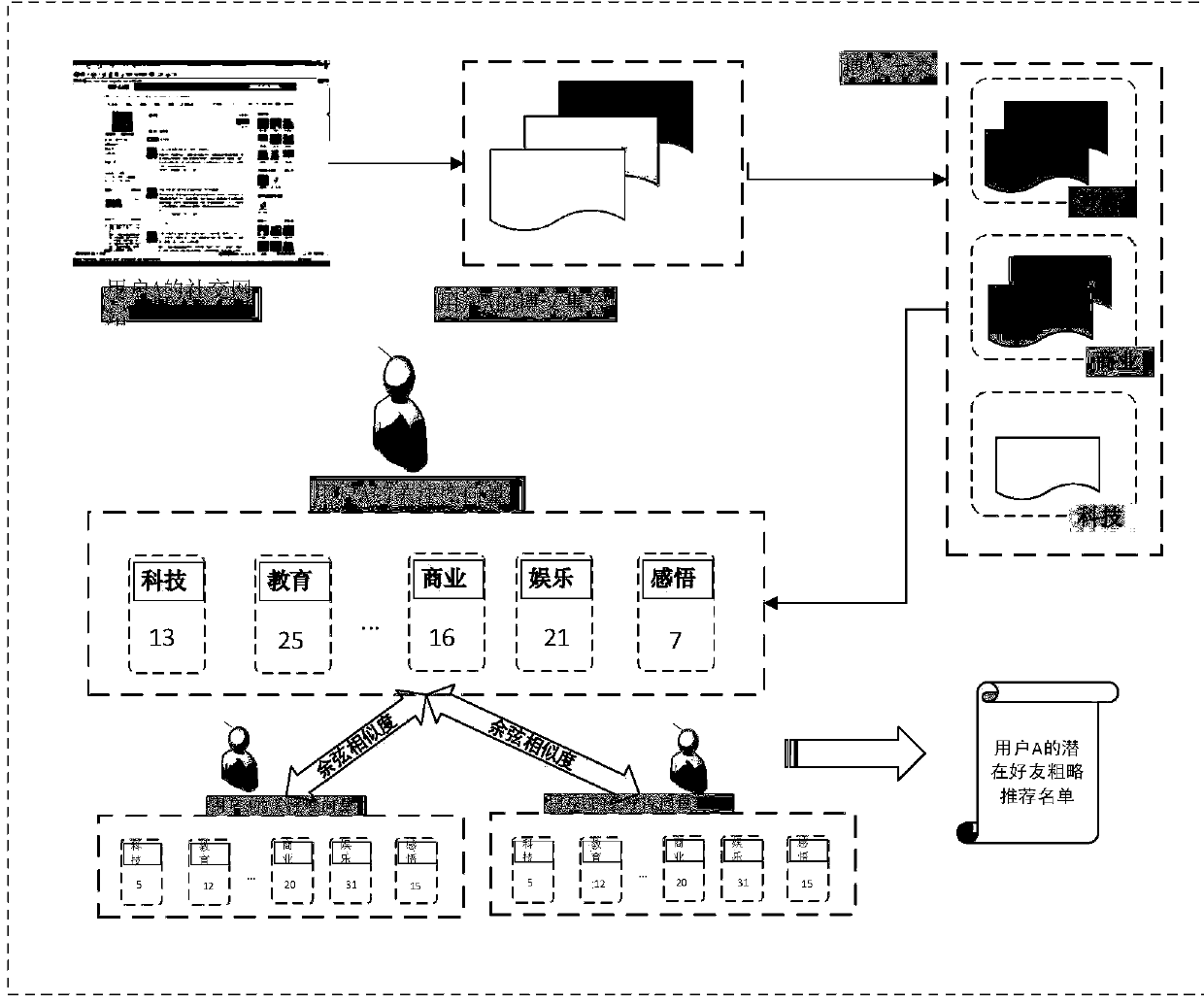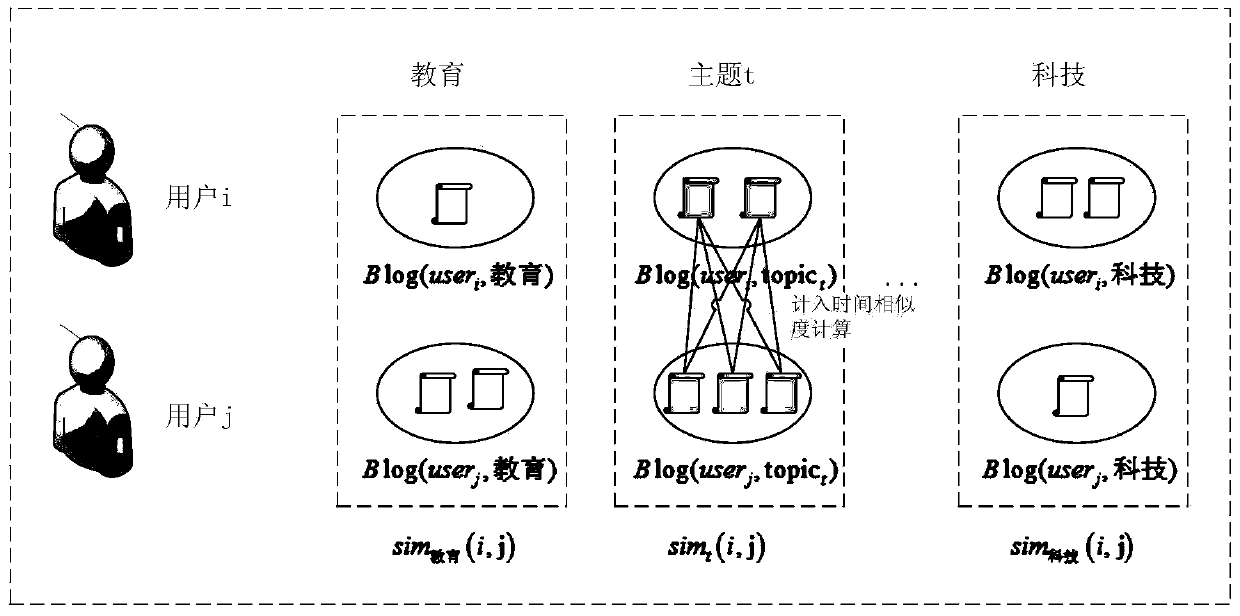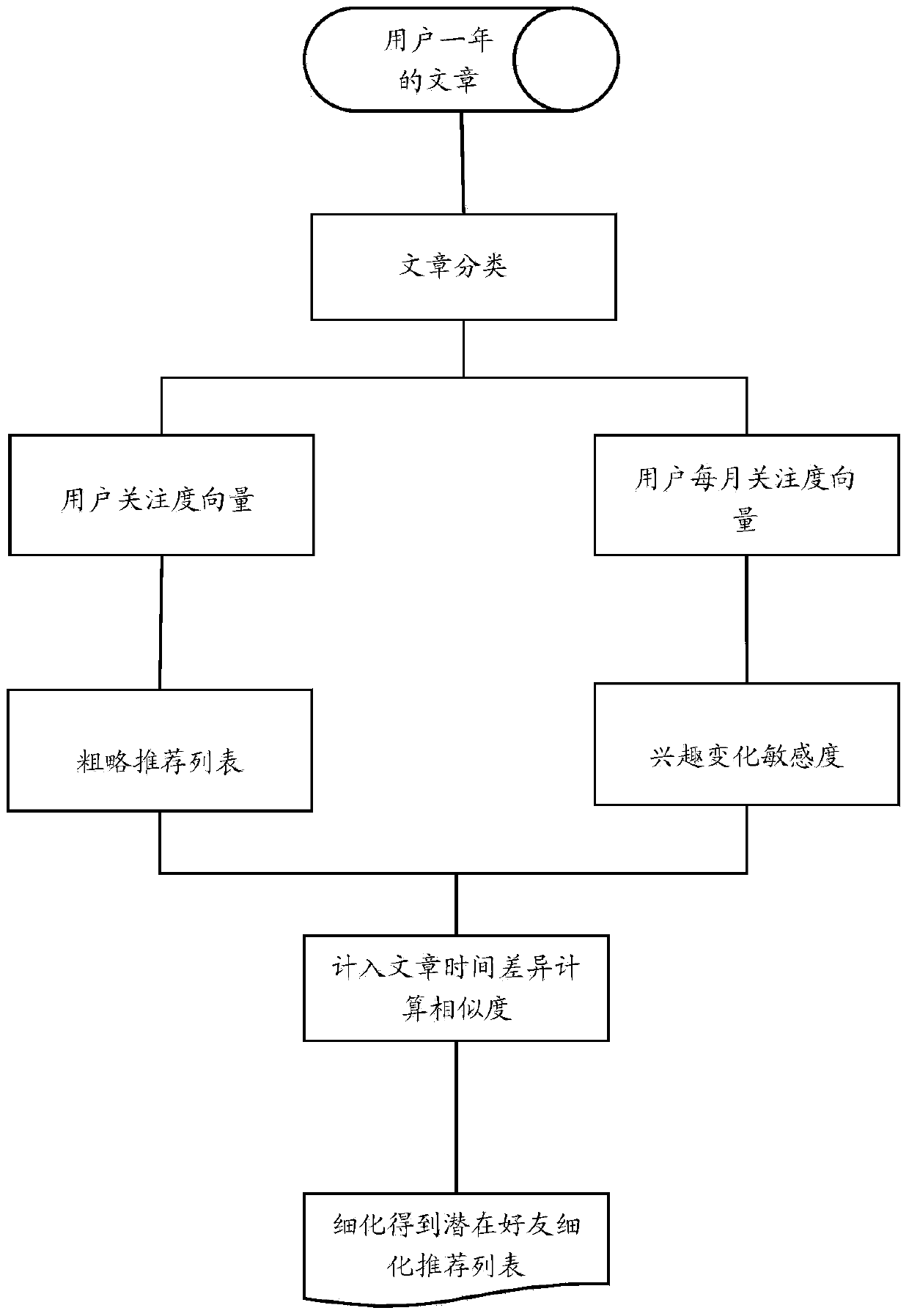Method for recommending potential friends in social network
A technology for social networking and friend recommendation, applied in the field of potential friend recommendation, it can solve the problem that the user's contribution to expanding the circle of friends is not very significant.
- Summary
- Abstract
- Description
- Claims
- Application Information
AI Technical Summary
Problems solved by technology
Method used
Image
Examples
Embodiment 1
[0070] Please refer to figure 1 , the present embodiment provides a method for recommending potential friends in a social network. figure 1 The process shown is processed, and the method includes the following steps:
[0071] S01: Obtain all the articles published by each user within one year from the social network server, and store and record them. In this embodiment, first obtain 5,314 friends from the API interface of Renren.com, and mine a total of 17,956 articles from them Shared articles and 138,901 original articles, among which articles can also be called blog posts; in the step S01, all articles published by each user within one year are stored in the following manner:
[0072] Blog(user i )={b 1 , b 2 ,...,b q}
[0073] Among them, Blog(user i ) represents the collection of all articles of user i, b q Refers to Blog(user i ) in the qth article.
[0074] The topic of the article may refer to the topic selected at the beginning of writing the article in the ...
Embodiment 2
[0120] The difference between this embodiment 1 and embodiment 1 is that in this embodiment, S3, S4, and S5 are sequential, that is, they are implemented sequentially. Then, in S4, only x users in the rough list and specific The interest change sensitivity of the user, S5 only calculates the refined similarity between the specific user and the x users in the rough list, unlike in Example 1, which calculates the interest change sensitivity of all users As well as refining the similarity, in embodiment 1, the required information can be retrieved from all the results, and only one calculation is needed to satisfy the friend recommendation of all users. In embodiment 2, S4 and S5 are respectively performed for different users. Calculations, that is, need to be calculated separately. Except for the above differences, the specific implementation in each step is similar to Example 1.
[0121] Specifically, this implementation provides a method for recommending potential friends in ...
PUM
 Login to View More
Login to View More Abstract
Description
Claims
Application Information
 Login to View More
Login to View More - R&D
- Intellectual Property
- Life Sciences
- Materials
- Tech Scout
- Unparalleled Data Quality
- Higher Quality Content
- 60% Fewer Hallucinations
Browse by: Latest US Patents, China's latest patents, Technical Efficacy Thesaurus, Application Domain, Technology Topic, Popular Technical Reports.
© 2025 PatSnap. All rights reserved.Legal|Privacy policy|Modern Slavery Act Transparency Statement|Sitemap|About US| Contact US: help@patsnap.com



